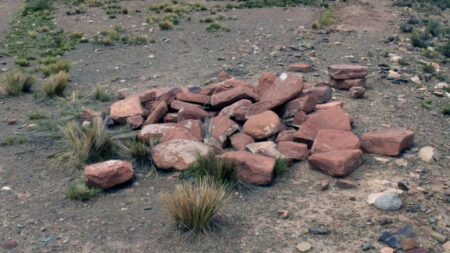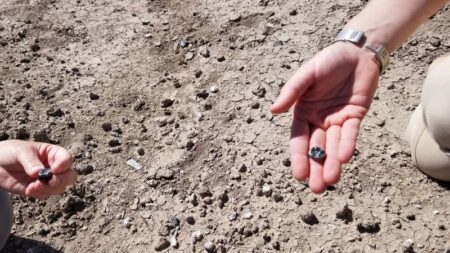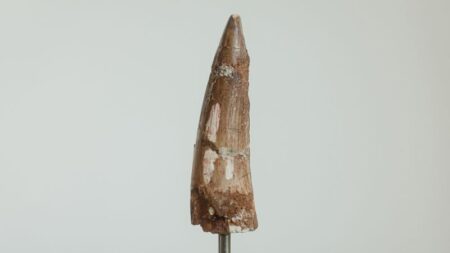A remarkable find has captured the attention of enthusiasts and historians alike, as a medieval sword has recently gone on display at a prominent museum in the Netherlands. This extraordinary artifact was discovered serendipitously during a routine dredging operation on a river situated in the heart of the country. Such unexpected discoveries offer a unique glimpse into history, providing insights that illuminate the lives and practices of those who lived many centuries ago.
The sword was unearthed on March 1, 2024, as part of maintenance work associated with the Linschoten Estate. Following its discovery, the sword was generously donated to the Rijksmuseum van Oudheden (National Museum of Antiquities) in Leiden. This act of preservation ensures that the sword, which represents a significant aspect of medieval craftsmanship, can be appreciated by the public and studied by scholars. The museum’s announcement on this remarkable find emphasizes the importance of such artifacts in understanding historical contexts.
Dating back to the period between 1050 and 1150, the sword measures an impressive one meter (approximately 3.3 feet) in length. What sets this sword apart is its artistic detailing, including inlays made from gold-colored copper that form intricately designed shapes, including a cross and the symbol known as the endless knot. These details not only highlight the craftsmanship of the time but also suggest a deeper cultural and spiritual significance, reflecting the beliefs and values of its creators.
The sword features a long crossguard and a distinctive nut-shaped pommel, indicative of the craftsmanship skills that were prevalent during its time. The material used is high-quality iron, which has been traced back to the Veluwe region, known for its rich iron ore deposits. According to the museum, the preservation of the sword is astonishing given its age; only the organic elements — such as the wooden grip and any likely leather wrappings — have deteriorated over the centuries. Remarkably, the iron itself has remained in excellent condition due to the anaerobic (oxygen-poor) environment of the wet soil where it was found.
The museum’s statement adds a layer of intrigue, noting that the condition of the sword is highlighted by traces of the wooden hilt still being visible. The circumstances surrounding the sword’s deposit in the river pave the way for further speculation. It appears it was intentionally placed there, as there were no remnants of its scabbard nearby. Such actions could point to ritualistic practices or a significant event from the past.
“Medieval swords were deeply personal possessions,” noted the museum, suggesting that they were often either laid to rest with their owners or ceremoniously deposited into water. This ritualistic deposition, the museum suggests, often results in exceptional preservation of the swords, like this one, which has survived a millennia with surprisingly little damage.
Historically, the area surrounding the sword’s original context would have been under the rule of the Bishop of Utrecht, a notable figure during that time, who often found himself at odds with the growing influence of the Counts of Holland and Flanders. This backdrop is essential as it establishes a political landscape rife with conflict and complexity — key elements in understanding the sword’s significance.
The sword itself serves as a link to a transitional period in military history. The museum elaborates that during this era, the tactics and weaponry evolved significantly. Traditional vertical slashing techniques from horseback began to shift toward more horizontal thrusting maneuvers designed to penetrate armor more effectively. This fascinating transition in weapon design and usage is encapsulated in the sword, which is versatile enough to be wielded with one hand, suitable for both horizontal and vertical techniques.
In conclusion, the discovery of this medieval sword is not merely about unearthing a weapon; it is a lens into the social, cultural, and political dimensions of the time. As it resides within the Rijksmuseum van Oudheden, visitors are afforded the opportunity to engage with history, continually reminding us of the rich tapestry of our past that informs our understanding of the present.












